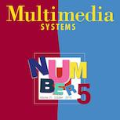As next-generation wireless communication systems need to be able to operate in high-frequency bands and high-mobility scenarios, delay-Doppler (DD) domain multicarrier (DDMC) modulation schemes, such as orthogonal time frequency space (OTFS), demonstrate superior reliability over orthogonal frequency division multiplexing (OFDM). Accurate DD domain channel modeling is essential for DDMC system design. However, since traditional channel modeling approaches are mainly confined to time, frequency, and space domains, the principles of DD domain channel modeling remain poorly studied. To address this issue, we propose a systematic DD domain channel measurement and modeling methodology in high-speed railway (HSR) scenarios. First, we design a DD domain channel measurement method based on the long-term evolution for railway (LTE-R) system. Second, for DD domain channel modeling, we investigate quasi-stationary interval, statistical power modeling of multipath components, and particularly, the quasi-invariant intervals of DD domain channel fading coefficients. Third, via LTE-R measurements at 371 km/h, taking the quasi-stationary interval as the decision criterion, we establish DD domain channel models under different channel time-varying conditions in HSR scenarios. Fourth, the accuracy of proposed DD domain channel models is validated via bit error rate comparison of OTFS transmission. In addition, simulation verifies that in HSR scenario, the quasi-invariant interval of DD domain channel fading coefficient is on millisecond (ms) order of magnitude, which is much smaller than the quasi-stationary interval length on $100$ ms order of magnitude. This study could provide theoretical guidance for DD domain modeling in high-mobility environments, supporting future DDMC and integrated sensing and communication designs for 6G and beyond.
翻译:暂无翻译





